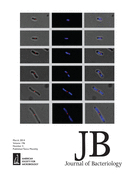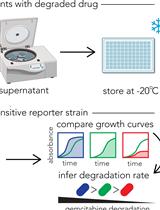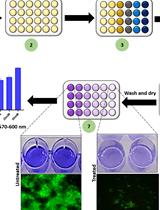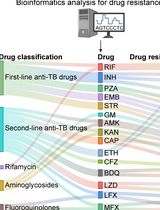- EN - English
- CN - 中文
In vitro Dynamic Model of a Catheterized Bladder and Biofilm Assay
膀胱导管插入和生物膜试验的体外动态模型
发布: 2015年01月20日第5卷第2期 DOI: 10.21769/BioProtoc.1381 浏览次数: 12863
评审: Anonymous reviewer(s)
Abstract
Biofilm formation on catheters is thought to contribute to persistence of catheter-associated urinary tract infections (CAUTI) which represent the most frequent nosocomial infections. Understanding of factors relevant for CAUTI pathogenesis and evaluation of new therapeutics or interference strategies requires a model system that mirrors the physico-chemical conditions prevailing in a catheterized human bladder. The described in vitro dynamic model of a catheterized bladder enables to emulate many of the characteristics of a catheterized human bladder albeit in the absence of a bladder epithelium. A minor modification compared to the original model system (Stickler, et al., 1999) allows temperature maintenance of the top 10 cm of the catheter, thereby enabling reproducible monitoring of biofilm formation on the internal catheter surface.
Materials and Reagents
- NaCl (Carl Roth, catalog number: 9265.1 )
- 70% ethanol
- dH2O
- NaCl (Carl Roth, catalog number: 9265.1)
- Tryptone (Carl Roth, catalog number: 8952.3 )
- Yeast extract (Carl Roth, catalog number: 2362.2 )
- Agar-agar (Carl Roth, catalog number: 5210.2 )
- Na2SO4 (Carl Roth, catalog number: 8560.1 )
- CaCl2.2H2O (Carl Roth, catalog number: CN93.1 )
- MgCl2.6H2O (Carl Roth, catalog number: 2189.1 )
- NaCl (Carl Roth, catalog number: 9265.1)
- Na3C6H5O7.2H2O (Carl Roth, catalog number: 3580.1 )
- (COONa)2 (Carl Roth, catalog number: 4267.1 )
- KH2PO4 (Carl Roth, catalog number: 3904.1 )
- KCl (Carl Roth, catalog number: 6781.1 )
- NH4Cl (Carl Roth, catalog number: K298.2 )
- Urea (Carl Roth, catalog number: X999.3 )
- Tryptic soya broth/CASO medium (Carl Roth, catalog number: X938.1 )
- Gelatine (Carl Roth, catalog number: 4582.2 )
- NaOH (Carl Roth, catalog number: 6771.1 )
- LB medium (see Recipes)
- LB agar (see Recipes)
- Artificial or human urine (see Recipes)
Equipment
- Peristaltic pump for urine filtration (e.g. Heidolph Instruments GmbH, model: Pump drive 5006 )
- 10 L polycarbonate carboy for urine reservoir (e.g. Thermo Fisher Scientific, Nalgene®, 10 L PC with polypropylene cap with three inlets)
- SARTORIUS P Midi Cap filter cartridge (SARTORIUS, catalog number: 5235307H9 )
- Peristaltic multi-channel pump for urine feed (Watson-Marlow Pumps Group, model: 205U )
- Borosilicate Glass bladder models (Figure 1) (Georg Becker Laboreinrichtungen GmbH & Co KG, www.laborbecker.at)
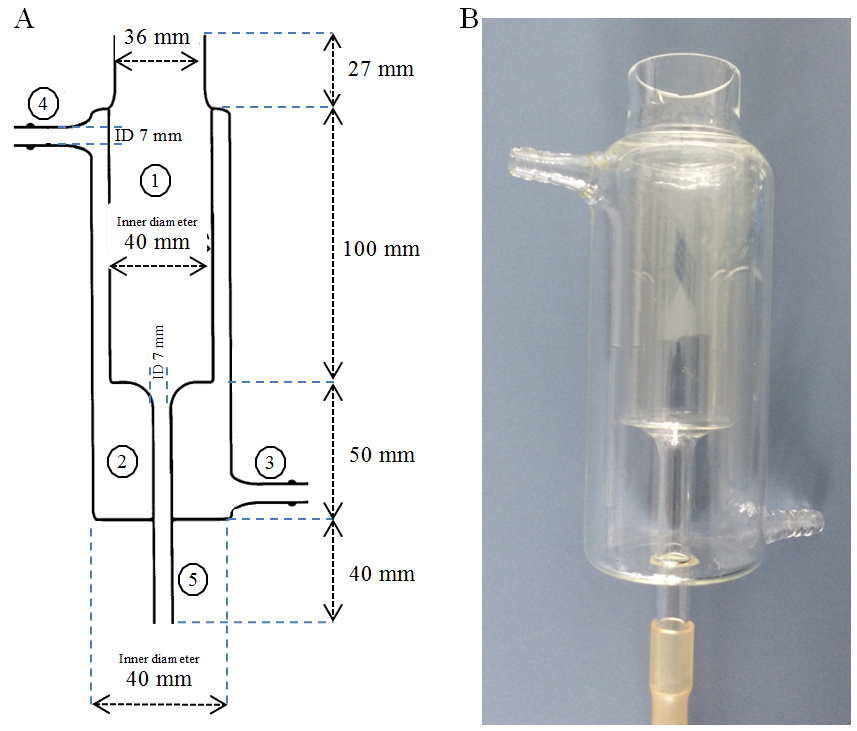
Figure 1. Glass bladder model scheme and dimensions. Schematic representation including length and inner diameter (ID) indications A and custom-made model B. Relevant parts are indicated: Artificial bladder compartment (1), temperature control compartment (2), connection for incoming (3) and outgoing (4) temperature control water circuit, artificial urethra for catheter insertion (5).
- Water bath with connections for external water circle (e.g. LAUDA, model: E10 )
- Tripod or other holders for mounting of glass bladder models (e.g. Bochem Instrumente GmbH, Portable table frame TG, catalog number: TG500 )
- Silicone stopper (35 mm) with 6 mm decentralized hole
- Glass tube (15 cm, 6 mm outer diameter = OD)
Note: We use cut 1 ml glass pipettes (BRAND).
- Silicone tubings: 2 m (ID 3 mm, OD 5 mm)
- Silicone tubings: 1 m (ID 9 mm)
- Silicone tubings: 1 m (ID 5-6 mm)
- Tygon tubings (ID 8 mm) (VWR International, catalog number: 228-1294 )
- Tube Connectors (PP, 3-5mm - 6-10 mm) (Bartelt, catalog number: 37.559 )
- T-connectors (PP) for tubings (ID 3 mm) (Carl Roth, catalog number: E763.1 )
- Urinary Catheter (all silicone Ch14) (BARD, catalog number: 153509 )
- 10 ml syringe
- Drainage bags (e.g. SARSTEDT AG, catalog number: 74.5220.005 )
- Clamps (e.g. VWR International, catalog number: 229-0072 )
- Ultrasonic cleaner (BANDELIN electronic, model: Sonorex RK100H )
- Vortex (e.g. VWR International, catalog number: 444-0206 )
- Recommended (air vents as breathing barrier for urine reservoir flask) (e.g. VWR International, catalog number: 28144-160 )
Procedure
文章信息
版权信息
© 2015 The Authors; exclusive licensee Bio-protocol LLC.
如何引用
Maierl, M., Jörger, M., Rosker, P. and Reisner, A. (2015). In vitro Dynamic Model of a Catheterized Bladder and Biofilm Assay. Bio-protocol 5(2): e1381. DOI: 10.21769/BioProtoc.1381.
分类
微生物学 > 抗微生物试验 > 抗细菌试验
微生物学 > 微生物生物膜 > 生物膜培养
微生物学 > 微生物-宿主相互作用 > 体外实验模型
您对这篇实验方法有问题吗?
在此处发布您的问题,我们将邀请本文作者来回答。同时,我们会将您的问题发布到Bio-protocol Exchange,以便寻求社区成员的帮助。
提问指南
+ 问题描述
写下详细的问题描述,包括所有有助于他人回答您问题的信息(例如实验过程、条件和相关图像等)。
Share
Bluesky
X
Copy link


